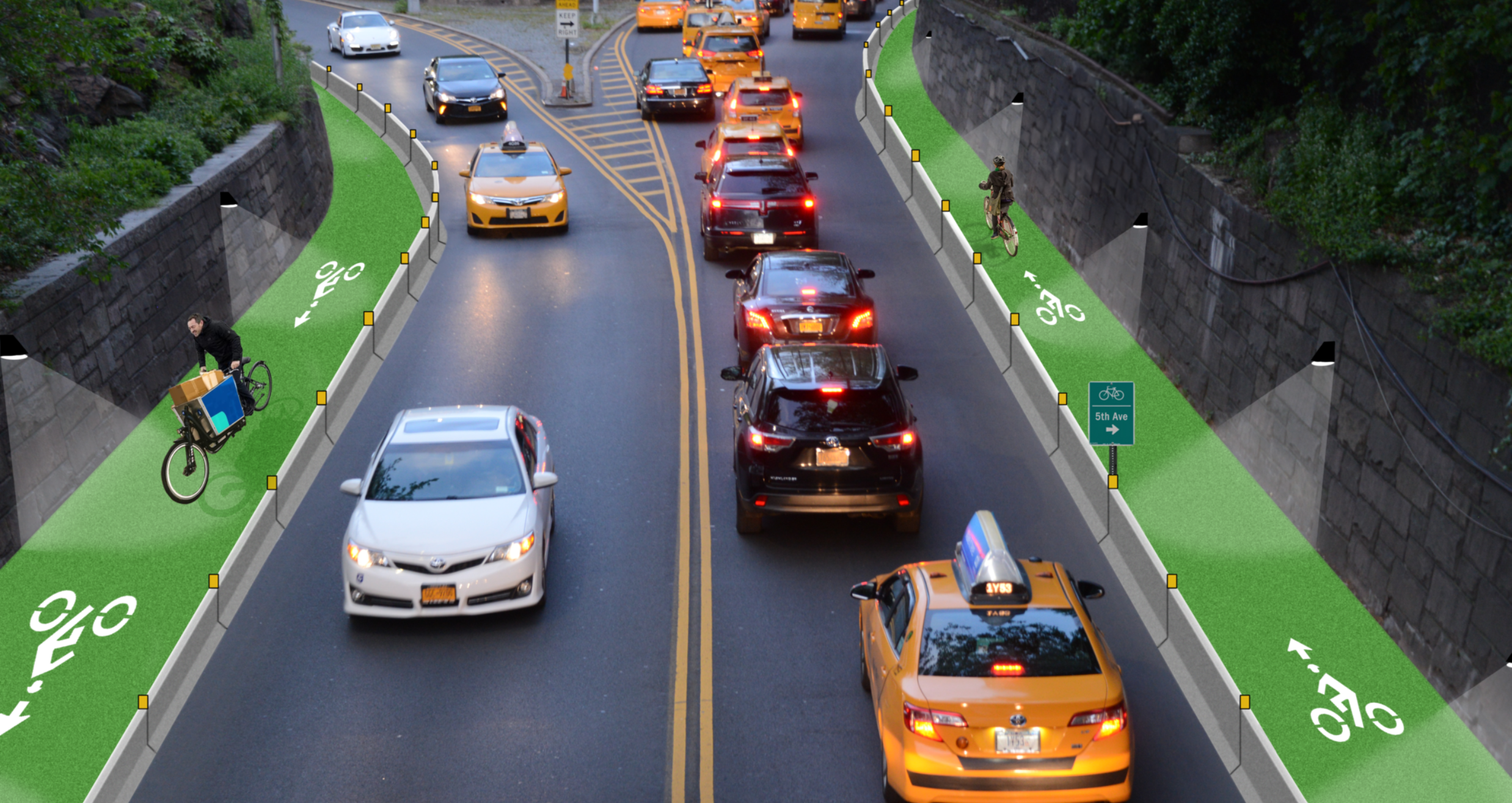The Central Park Conservancy endorsed creating a protected bike lane on at least one of the park's crosstown routes, and left the door open for creating safe passage for cyclists on all of the streets cutting through the park.
The conservancy's highly anticipated study on how to modernize the park's car-free roads, released on Tuesday, endorsed the idea of remaking Central Park's four crosstown transverses on 66th, 79th, 86th and 96th streets with protected bike lanes. To start with, the conservancy suggested building an eastbound and westbound bike lane on the north and south sidewalks of the 86th Street Transverse.
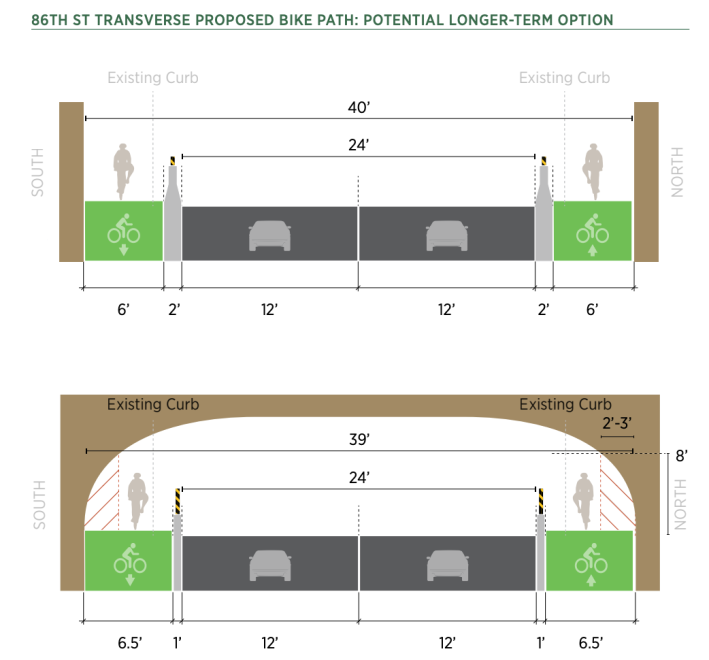
"With only two underpasses and a strategic location, the 86th Street transverse is the highest priority for investigation of a potential bike lane," the conservancy study said. "The design would strategically reduce vehicle lanes to a minimum viable width, ensuring the maximum allocation of space for cyclists."
Creating safe routes for cyclists to get across Central Park has been a longtime fight for neighborhood activists. Right now, the transverses are the only direct paths across the park that cyclists can use, since the designated shared paths inside the park are indirect, hilly or require cyclists to get off of their bikes. But the transverses are also dangerous for cyclists, since the roads provide no protection from speeding vehicles.
The lack of safe crosstown results led to the 2019 death of Daniel Cammerman, who was hit by the driver of a school bus on the 96th Street transverse as he biked across the park.
Advocates praised the push for crosstown bike lanes and noted that giving people the ability to cut across the park without going into it can make things safer and more convenient for everybody.
"It would play a huge role in taking pressure off the park itself if you can accommodate people who just need to go across," said Carl Mahaney, the director of StreetopiaUWS. "I think they're banking on having these corridors where people can safely and conveniently bypass the park if they don't have any reason to go there."
Elsewhere in the study, the Conservancy suggested creating a two-way protected bike lane on Fifth Avenue, turning the Central Park West protected bike lane into a two-way bike lane and installing crosstown protected bike lanes on 59th and 110th streets.
The study also suggested a number of ways to improve the user experience inside the park. The Conservancy is also going to explore removing the overhead traffic signals on the loop and replacing them in some areas with smaller signals closer to the ground, with the hope that pedestrians and cyclists will actually pay attention to them.
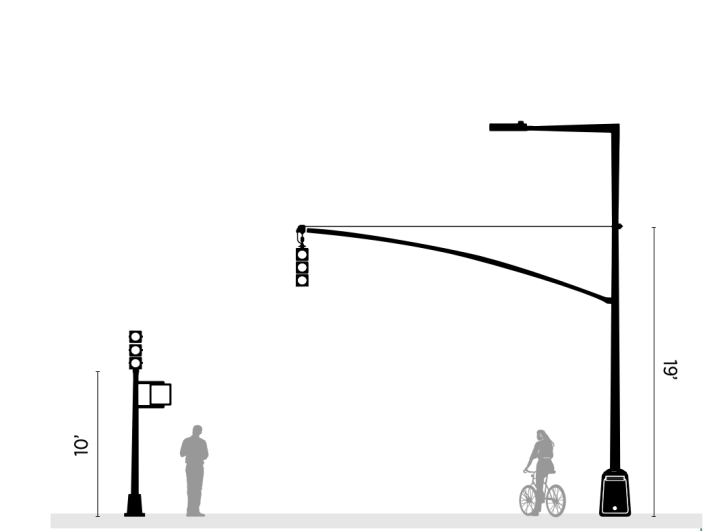
"Replacing the traffic signals with more effective design interventions — including the possibility of pedestrian-height, flashing beacons with icons that speak more directly to cyclists — would be an improvement," the report noted.
A near-term goal for the Conservancy is to re-stripe the Central Park loop to create more explicit spaces for walkers, runners and joggers, slow cyclists and e-bikes, e-scooters and smaller park maintenance vehicles.
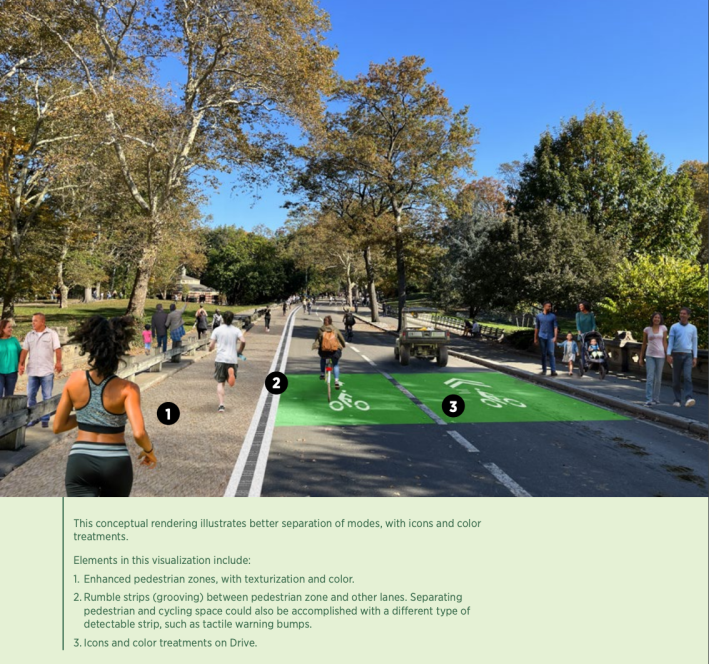
Mahaney praised the idea of segmenting the drives with the fastest vehicles on the right side of the road, since he said it already reflects the way the park is being used.
"They're really kind of codifying the way the loop is used, which I think is a testament to the work that went into this and ... the users that they talked to and the observations that they made, because that really is how it's being used," he said.
Sam Schwartz Engineering, which put together the report, sifted through over 10,000 responses to an online survey and comments from multiple public meetings and community board presentations, did field observations at the park and crunched data around park usage and travel patterns.
The firm found that pedestrians are the plurality of park users at 48 percent, but cyclists are the next biggest group of park users at 45 percent. Also e-scooter and other electric vehicle users outnumber horses on the loop.
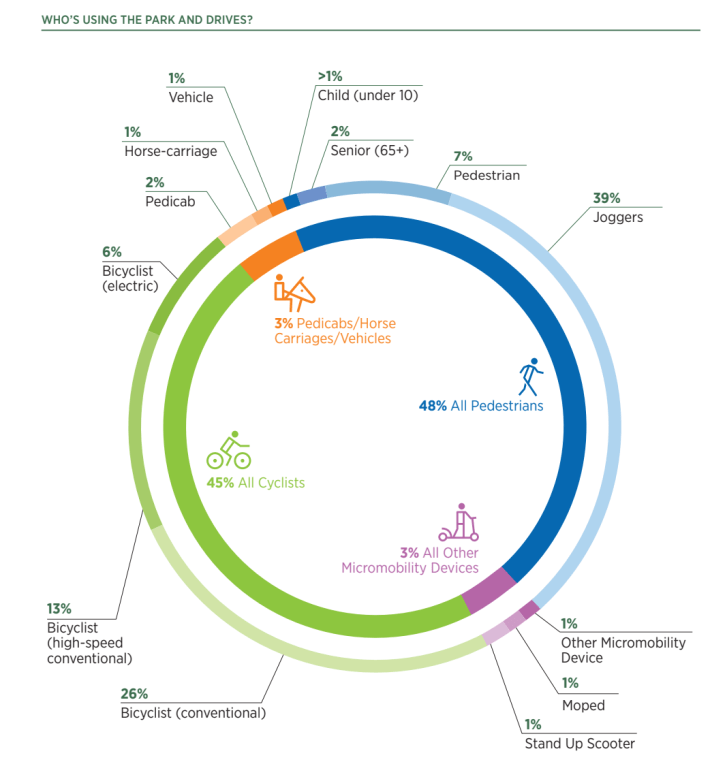
The CPC study on how to remake the park drives has been in the works years. Originally conceived of as a way to reconfigure the park geometry after the de Blasio administration made Central Park completely car-free in 2018, the idea sat on the shelf until 2022 when someone remembered the layout of the park drives didn't need to leave room for the cars that were no longer allowed in Central Park.
That the loop was still organized for traffic that included cars meant that pedestrians, cyclists, pedicabs and even horses were in constant conflict since no one has had an exact idea where to move on the road.
The Department of Transportation, which would be in charge of creating the crosstown bike lanes, said discussions on those and other ideas will move forward in the near future.
"These recommendations will update the park's drives to prioritize pedestrian safety while also better accommodating cyclists and legal e-mobility options—both traveling within the park or through it across Manhattan," said Commissioner Ydanis Rodriguez, adding that there will be more to discuss "in the months to come."
